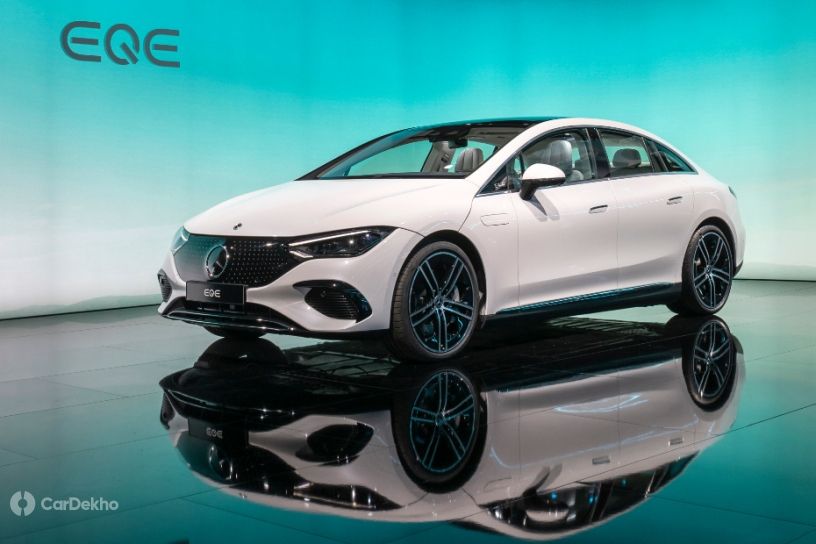Mercedes-Benz EQE Makes Global Debut Ready To Take On Tesla Model 3
Modified On Sep 06, 2021 06:04 PM By Sonny
- Write a comment
Its 90kWh battery comes with a claimed WLTP rated range of up to 660km
-
The EQE is the electric version of the E-Class sedan.
-
It has a lot in common with the bigger and more luxurious EQS.
-
Debuted in a single EQE 350 variant with a single electric motor making 292PS/530Nm on the rear axle.
-
It gets the option of the same MBUX hyperscreen as the EQS with three large integrated displays.
-
The EQE will make a staggered global launch starting from mid-2022.

The Mercedes-Benz EQE, the all-electric iteration of the E-Class luxury sedan, has debuted globally. In the German carmaker’s EV portfolio, the EQE slots in below the EQS that was revealed last April.
The EQE is based on the same EVA2 platform as the EQS but is smaller, its 3120mm wheelbase being 90mm shorter than that of the EQS while being 41mm longer than the long wheelbase E-Class sold in India. It has the same seamless styling with the cab-forward design, short overhangs, minimal joints and smoothed surfaces. The biggest advantage for electric offerings is the extra space inside the cabin, which makes the EQE more spacious than the current E-Class. Some of the distinguishing design elements over the EQS are the headlights and the larger black panel ‘grille.’

Under the surface, the EQE’s battery pack offers 90kWh of usable energy and a claimed WLTP (Worldwide Harmonised Light Vehicle Test Procedure) range of up to 660km. In the debut-spec EQE 350 variant, it features a single electric motor on the rear axle that produces 292PS and 530Nm. There are plans for dual-motor variants which will add an electric motor on the front axle as well. Mercedes also intends to offer performance variants which will offer around 680PS.

The EQE’s standard 11kW onboard charger and an AC charger can top up the battery in a little over 8 hours. It has a maximum DC fast-charging capacity of up to 170kW, which allows the battery to charge from 10 to 80 percent in 32 minutes. While the EQE’s fast-charging capability may not be on par with the 800V tech offered in EVs like the Porsche Taycan or Hyundai Ioniq 5, it is still sufficient and quite practical. Most fast-charging stations in Europe or North America will be capable of delivering 170kW but only a few if any can offer 350kW that is supported by some of the new-gen Hyundai and Kia EVs.

The similarities between the EQE and EQS continue with the optional MBUX hyperscreen on the dashboard. It incorporates three displays housed under a single piece of curved glass that stretches from A-pillar to A-pillar. There’s a 12.3-inch digital driver’s display, a 17.7-inch central touchscreen infotainment system and a 12.3-inch OLED display for the front passenger. It also has a 77-inch head-up display atop the dashboard.

As a luxury electric sedan, the EQE’s feature list includes a built-in air purifier, 360-degree parking cameras, plush upholstery, multi-zone climate control, and powered seats. In terms of security, the EQE gets a host of advanced driver assist systems like active steering assist, active lane keeping assist, evasive steering assist, and active emergency stop assist. It also gets EV-specific safety systems to shut down the powertrain in the case of an accident.

The EQE is due to go on sale globally from mid-2022, with production to start at Mercedes’s plant in Bremen, Germany on the same line as the EQC. It will be taking on the likes of the Tesla Model 3 and the sportier BMW i4.
1 out of 1 found this helpful















